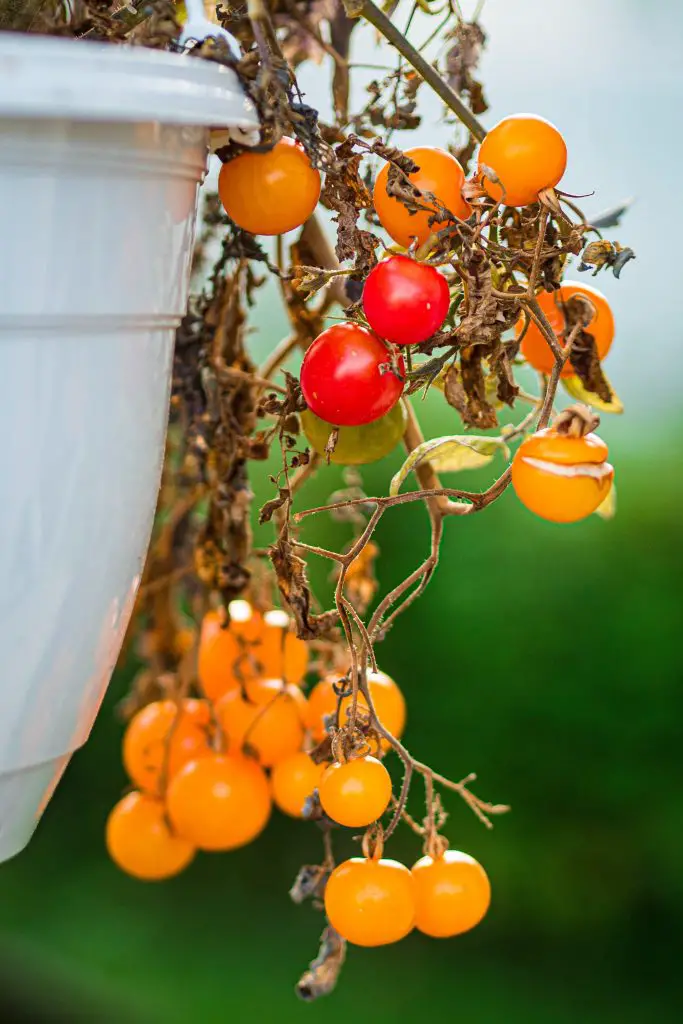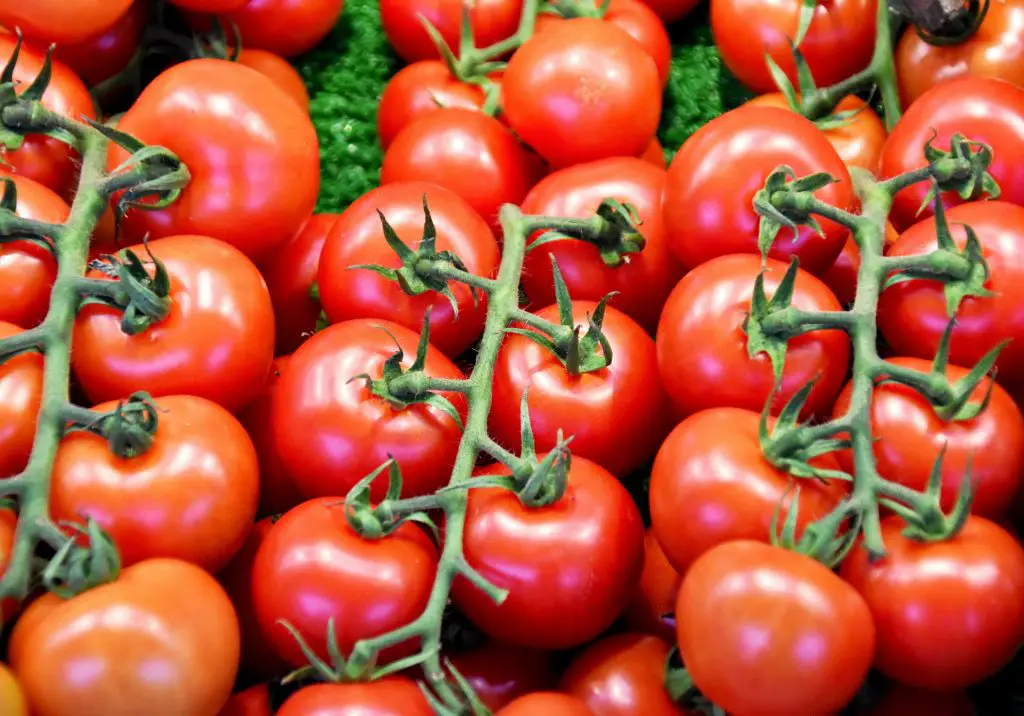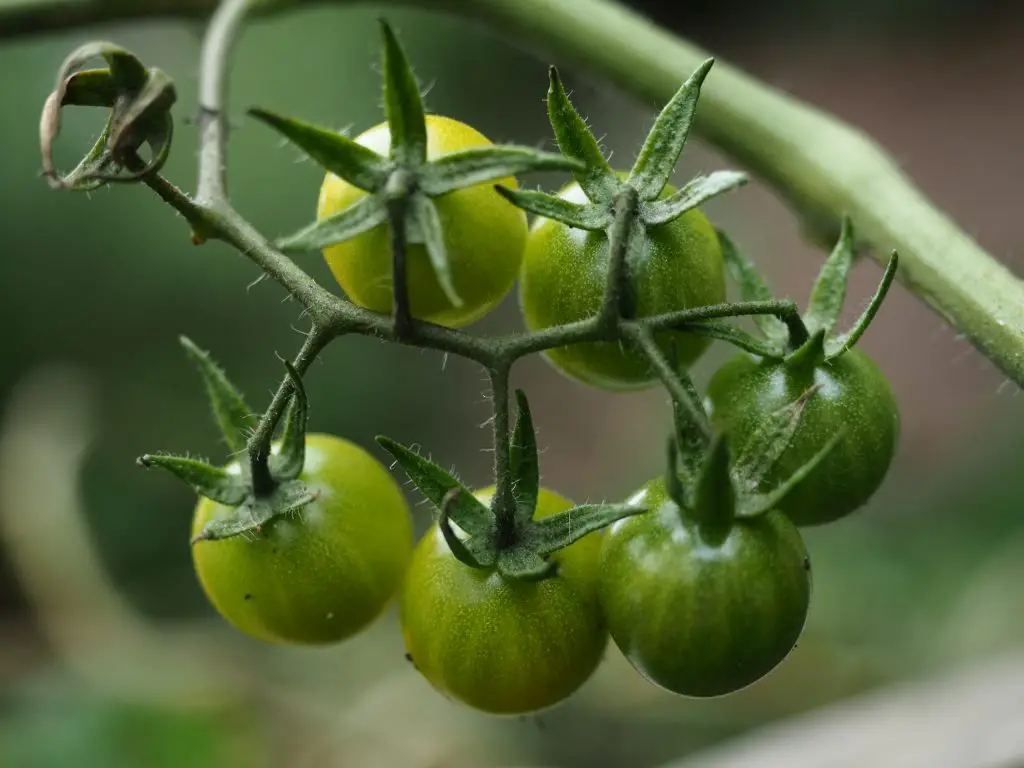How Many Tomatoes Can You Get From One Plant? Tomatoes are one of the most popular vegetables grown by home gardeners. This is largely because the plants are easy to grow, yield well, and taste significantly better than the Tomatoes offered at the local grocery store.
However, when growing tomatoes one of the first questions a novice gardener will ask is: – How many Tomatoes can you get from one Plant? This seems like a straightforward question but it really isn’t, it can depend greatly on the variety and conditions the fruit is grown in.
The volume of Tomatoes produced by a single plant is best defined by the weight produced per plant rather than the number of fruit. A yield typically varies from 20 to 35 lbs (9.1 to 15.8 kg) according to the study released by Ohio State University, whereas the number of fruit varies from 20 to 600. The varieties that produce relatively small fruit tend to produce many more fruit than those that produce larger fruit.
The correlation between the average size of fruit and the number of fruit produced by different varieties in the study is shown in the graph below.

The other complicating factor associated with quantifying the volume of fruit produced is the climate in which the Tomatoes are grown. The length of the growing season can dramatically affect the volume of fruit produced that you can ripen.
In the study from Ohio State University, the researchers recorded the quantity of ripe and green tomatoes fruit produced. The volume of green produced, which in some cases was approaching close to 50% of the total yield, demonstrates the extent of the effect the climate can have on the potential volume that could be produced.
The study was conducted in several locations in the great lakes region which has a relatively short growing season. In more favorable climates with extended growing season, it is highly likely that a good portion of the green Tomatoes produced could have been ripened.
Is There A Correlation Between The Size Of The Tomato And The Yield?
Given that the study showed a correlation between the reducing size of the Tomatoes and the fruit numbers produced, Is There A Correlation Between The Size Of The Tomato And The Yield?
The results from the Ohio State Study indicate that there is generally not a direct correlation between the size of the fruit and the yield produced. This in means that the size of the fruit cannot be used as a predictor of yield. See the chart below for results.

The tabulated results, which are shown in the table below also indicated that the order of ranking of varieties based on yield is largely unaffected by the inclusion of the green Tomato yield.
| Variety | Average Fruit Wt (oz) | No. Ripe Fruit Per Plant | No. Fruit Green Per Plant | Total Fruit Per Plant | Ripe Fruit Per Plant (lbs) | Total Fruit Per Plant (lbs) |
| Peron | 6.8 | 37.4 | 33.3 | 70.7 | 17.6 | 33.3 |
| Opalka | 5.4 | 34.3 | 32.6 | 66.9 | 13.6 | 26.5 |
| Jaune Flamme | 2.2 | 139.9 | 66 | 205.9 | 16.7 | 24.6 |
| Amish Paste | 6.7 | 31.7 | 20 | 51.7 | 15 | 24.5 |
| Oxheart | 6.7 | 38.1 | 19.5 | 57.6 | 16.1 | 24.3 |
| Burbank | 5.3 | 39 | 24.3 | 63.3 | 14.3 | 23.2 |
| Rutgers | 3.4 | 49 | 35.7 | 84.7 | 12.2 | 21.1 |
| Cherokee Purple | 9.9 | 18.5 | 10.9 | 29.4 | 13.1 | 20.8 |
| Brandywine | 14.4 | 12.4 | 6 | 18.4 | 11.6 | 17.2 |
| Tainan | 0.3 | 535.5 | 35.6 | 571.1 | 10.8 | 11.5 |
Additionally, the data also indicates that apart from a few outliers at either end of the scale most varieties generally will produce 20 to 25 lbs (9 to 11 kgs). This finding is fairly similar to an Australian study published by Clive Blazey in The Australian Vegetable Garden which is an excellent book that contains lots of trial data and helpful advice.
The study of 100 different varieties generally showed that the vast majority of Tomatoes produced yields fell in a similar range, though the yields were a little high generally than the Ohio State University study due to the growing conditions.
How To Grow Tomatoes?
Tomatoes are a frost-sensitive plant that grows best in relatively warm conditions, 68 to 86°F (20 to 30°C) is ideal. For those living in regions with relatively short growing seasons, it is imperative that seeds are sown as early as possible to maximize the yield.
The sowing of seed is typically done in early spring in modular trays that are stored undercover in a protected location. If you live in an area that has relatively cold winters additional heat may be required to ensure the seeds germinate. This may require the tray to be store inside your house.
The alternative to this is to use a heated propagating tray which is generally a better option as the heat applied is consistent and controlled. This type of equipment is relatively inexpensive and well worth investing in if you wanting to grow tomatoes or other heat-loving vegetables such as Peppers or Eggplants. Click here to check the latest price on Amazon.

The Tomato seeds should be planted at a depth 0.5 inches (1 cm) in seed raising mix. The seedlings will take around 6 weeks to reach a sufficiently large size to be planted out into the garden. This should only be done once the risk of frost has passed. If it is still too cold to plant the seedlings outside it is advisable to transplant them into a pot. This will enable to plant to continue to increase in size while waiting for conditions to improve which will ultimately accelerate the harvest.
If you live in the US try visiting the Seeds For Generations or St Clare Seeds websites as both companies have a broad range of heirloom seeds available. In the UK Thompson and Morgan have an extensive range of seeds available.
When conditions are warm enough seedlings should be planted out in the garden 16 to 20 inches (40 to 50 cm) apart in a warm sunny location that gets at least 6 to 8 hours of sun a day. The soil they are planted in should be rich moist soil with plenty of organic matter added that is, ideally, slightly acidic, pH of 6.2 to 7.0. To learn how to test and adjust the pH of soil go to https://planyourpatch.com/why-is-ph-important-in-soil/ for more information.
At the same time the seedlings are planted into the garden it is advisable to install a support structure for the plants. The size of the support structure required is dependent on the type of Tomato you are planting. Indeterminate, or vine Tomatoes can get up to 6 to 7 ft tall so sturdy, relatively tall structures are best. Things like temporary fencing panels work really well for this purpose.
Determinate or Bush Tomatoes are generally much shorter and only require a garden stake for support. To learn more about the differences between Determinate and Indeterminate Tomatoes click here.
During the growing season, it is important to regularly water the Tomatoes and remove side shoots from the plant to stop them from getting out of control. Side shoots are branches that appear between the main stem and existing side branches usually at a 45-degree angle. To read more about how to prune a Tomato plant to maximize yield click here.

You can expect Tomatoes to take approximately 100 days to produce fruit from the date of sowing however, this can vary depending upon the variety from 80 days until around 120 days. If you are purchasing seedlings, the fruit will be ready in around 60 to 70 days. The harvest period for Tomatoes generally lasts 6 to 8 weeks but can last longer depending upon the climate you live in climate.
How To Ripen Green Tomatoes
To ripen as many green Tomatoes as possible it is advisable to remove the top of the plant around 4 weeks prior to the first frost. Pruning the plant like this will encourage the Tomato to put all its energy into ripening the existing fruit on the plant.
Additionally, it is important to maximize the time that the Tomatoes spend on the plant as this allows the tomatoes more time to ripen. This can be done by protecting the plant when the frosts are relatively light. The best way to do this is using a plant protection blanket because they are easy to apply, are lightweight, and can be left on for days if required.

However, once the frost is heavy and the plants being to freeze despite the blanket being applied there is little benefit in leaving the plants outside. The fruits that exposed to the hard frosts will still be edible but will not store for after-ripening.
When bringing the Tomatoes inside leave them on the stems as this will aid in the ripening of the fruit. However, only leave Tomatoes of a reasonable size on the plant as very small green Tomatoes will not ripen.
To aid the ripening process you can either leave them on a window shelf that gets plenty of light or near other ethylene-producing fruits such as bananas and pears. Though neither one of these measures is essential for ripening they do speed the process up. The other option is to uproot the entire plant and hang it upside down from the rafters of the garage.
When storing Tomatoes during the ripening process it is preferable to avoid having them touching each other. The reason for this is that if one goes bad it will not affect other Tomatoes you are trying to ripen.
If after all this the Tomatoes remain green they can be used up in a Green Tomato Relish or Chutney. Below is a traditional recipe that I have used in the past.
Ingredients
- 500g Green Tomatoes
- 650g Onions
- 1 teaspoon Salt
- 1/4 teaspoon Ground All Spice
- 1/4 Cayenne Pepper
- 1 tablespoon Mustard
- 1 Cup Sugar
- 4 tablespoons Flour
- 1 teaspoon Curry Powder
- 3 Cups Vinegar
Method
- Prepare Tomatoes by washing and slicing.
- Prepare Onions by peeling and slicing.
- Mix Tomatoes and Onions in a bowl and sprinkle with Salt and leave for a couple of hours.
- Drain liquid from the Bowl and transfer to a large pot.
- Add the remaining ingredients to the bowl and cook until the mixture thickens.
- Bottle seal and label.
Related Articles
Are Grafted Tomatoes Really Worth The Money?
What is the Difference between a Determinate or Indeterminate Tomato?
Do You Need To Prune Indeterminate Tomatoes?
Why Do Cherry Tomatoes Taste Better Than Regular Tomatoes?
How Can You Tell If A Tomato Flower Is Male Or Female? And How To Hand Pollinate Them.
Is It Too Late To Plant Tomatoes? And How To Make The Most Of Summer
Can You Plant Seeds From A Store Bought Tomato? (Is It Possible?)
